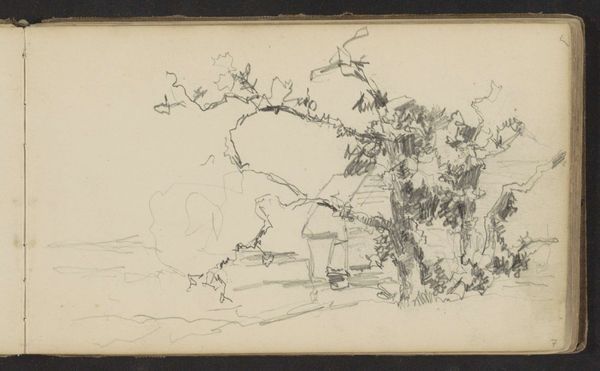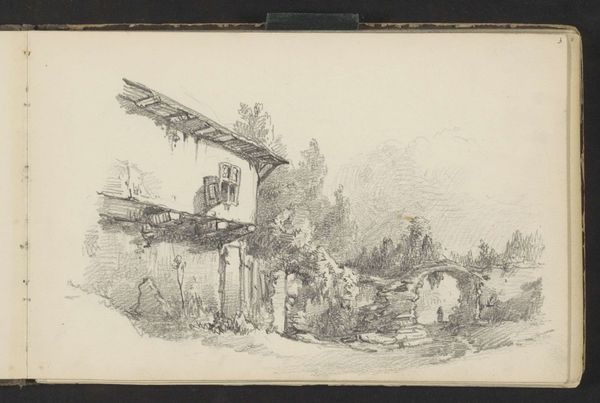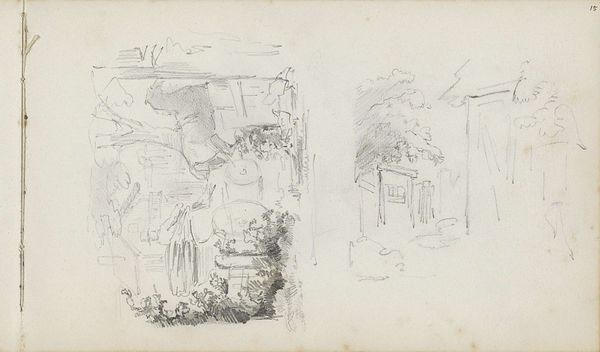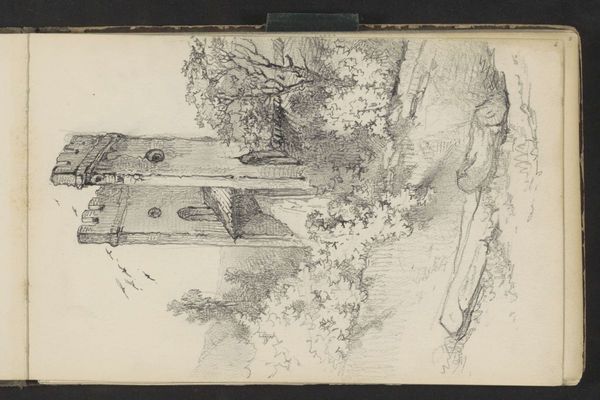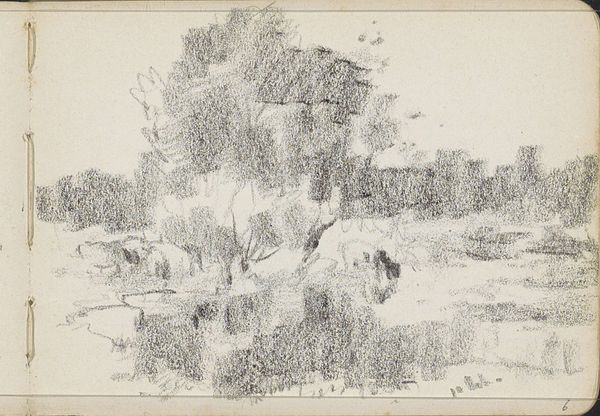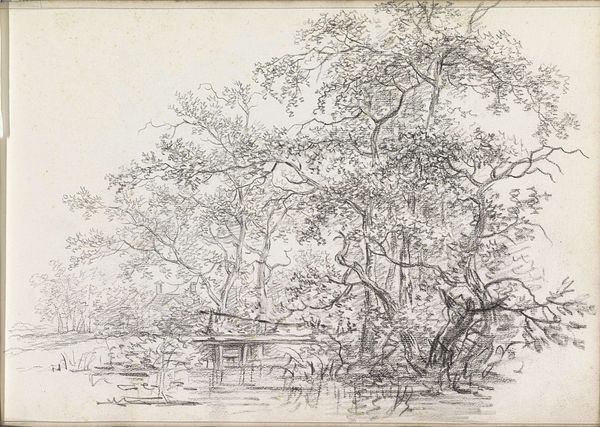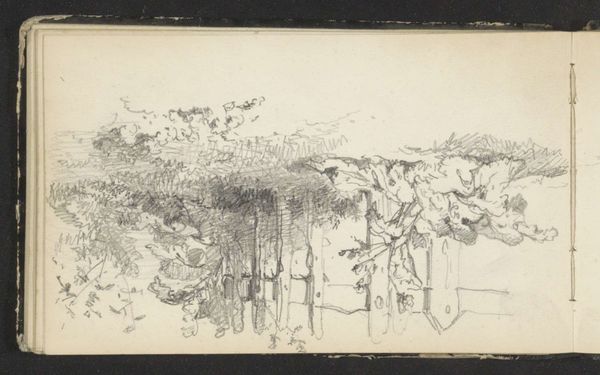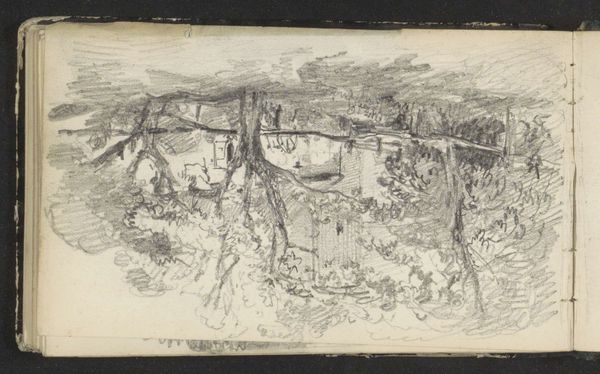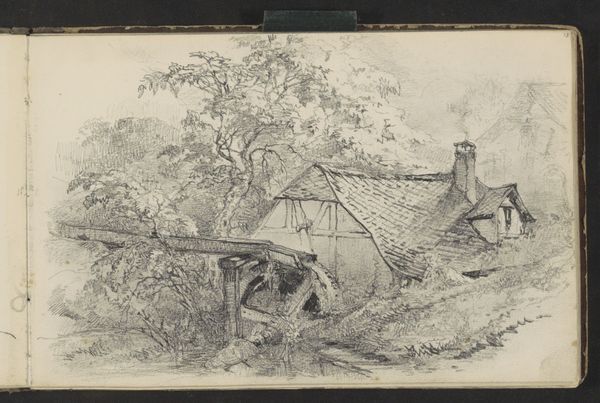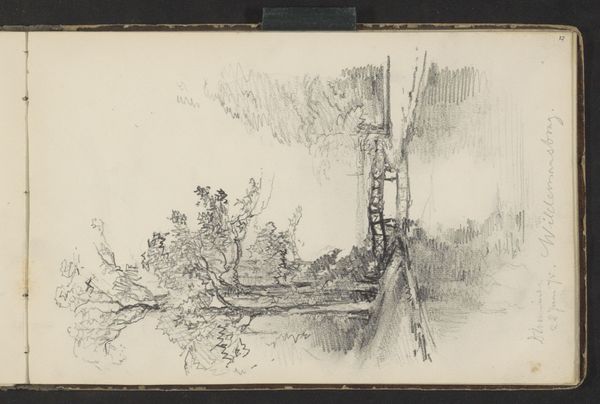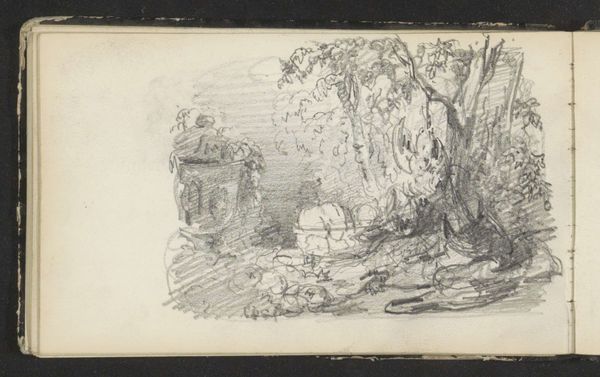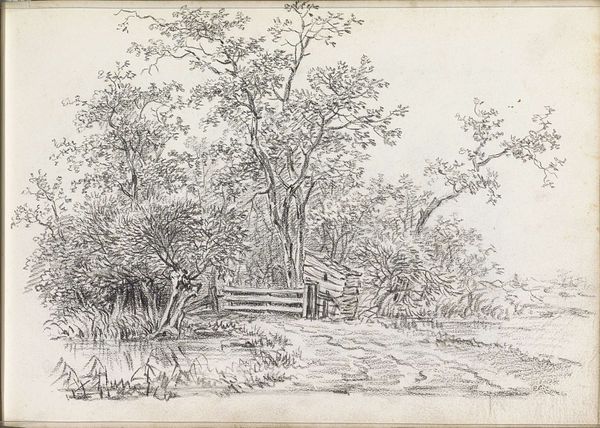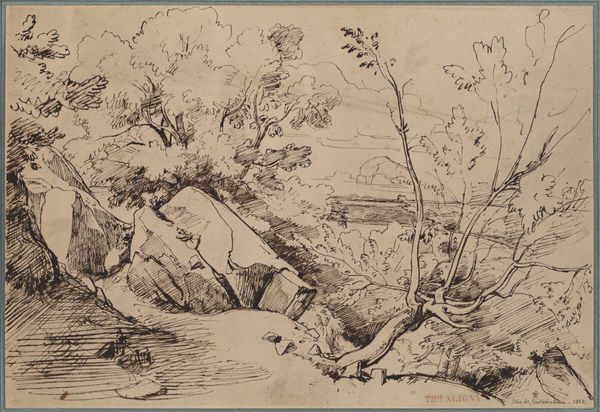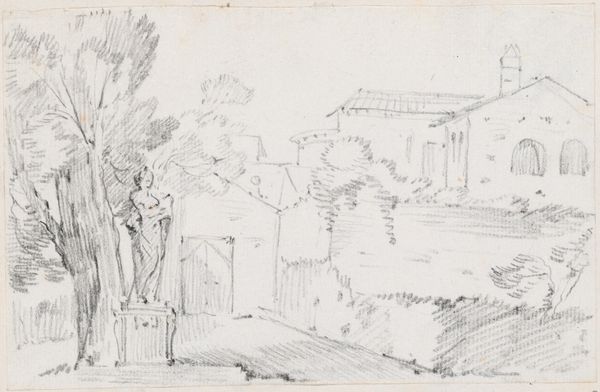
Copyright: Rijks Museum: Open Domain
Editor: This drawing, "Weg met een stenen poort tussen vakwerkhuizen," from around the 1870s, is by Maria Vos. I'm really drawn to its intimate, almost secretive feel, like stumbling upon a hidden passage. What do you see in this work? Curator: I see a moment captured at a pivotal time in Dutch history, steeped in the tension between preservation and progress. The artwork embodies the romanticist fascination with disappearing rural landscapes, reflecting broader socio-political concerns about industrialization and urbanization. Vos, as a female artist navigating a male-dominated art world, uses this imagery to explore themes of domesticity, privacy, and perhaps even resistance against encroaching modernization. Look closely at the figure in the window. What do they represent to you? Editor: Perhaps a witness, or someone excluded from this rapidly changing world? It feels like she's both part of and separate from the scene. Curator: Precisely. Consider the role of women at this time. Confined to the domestic sphere, they were often observers of societal change, yet lacked agency in shaping it. This image becomes a quiet commentary on those limitations. Vos seems to be asking: who gets to decide what is lost and what is gained in the name of progress? Does the "weg met" in the title – meaning "away with" – imply a lament, or perhaps a more forceful demand? Editor: That’s a powerful reframing. I hadn’t considered it as a question of agency, but I can definitely see how the artist's own position might influence that perspective. Curator: And the drawing style itself becomes part of this narrative. The detailed rendering, particularly the textures of the buildings and foliage, speaks to a desire to document and preserve what is on the verge of disappearing, making the act of drawing a form of resistance in itself. Editor: This has definitely opened my eyes to the layered meanings beneath this seemingly simple landscape. Thanks for sharing your insight! Curator: My pleasure! It's crucial to recognize the interplay between the personal, political, and artistic choices inherent in every artwork. It offers us a rich lens for understanding both the past and our present.
Comments
No comments
Be the first to comment and join the conversation on the ultimate creative platform.
